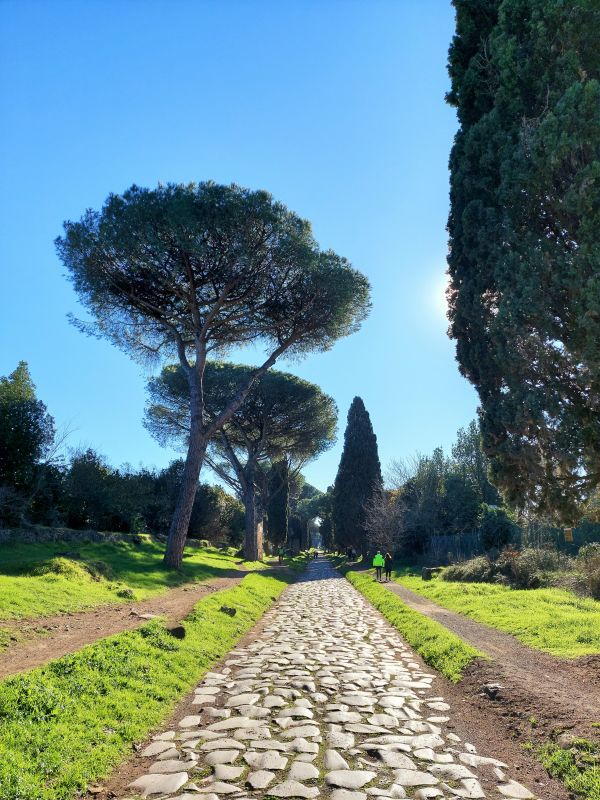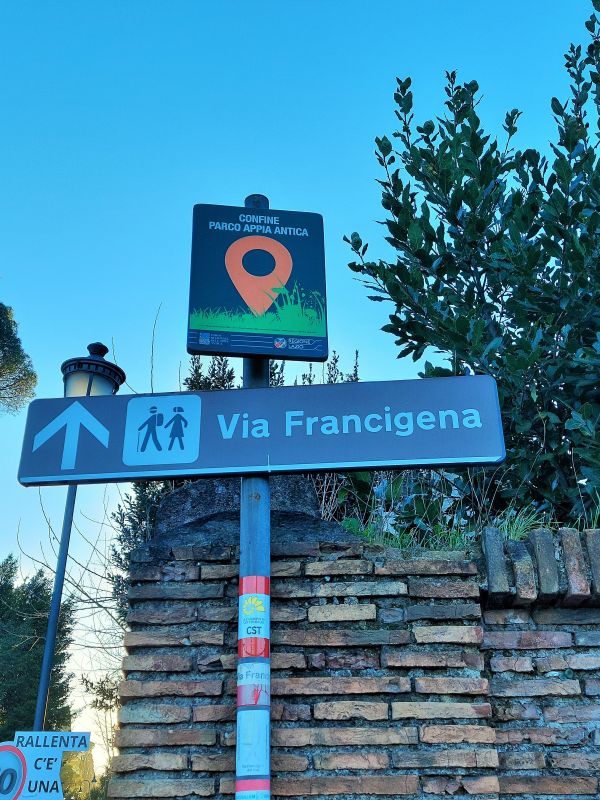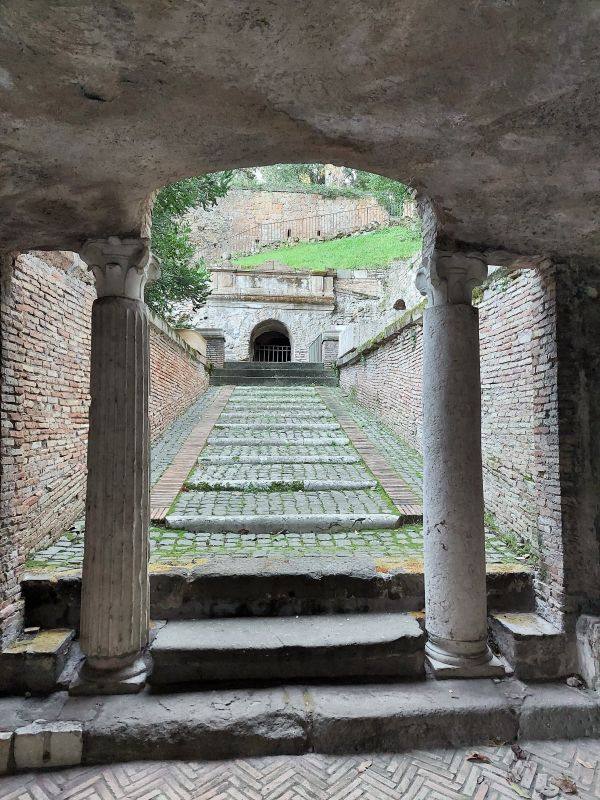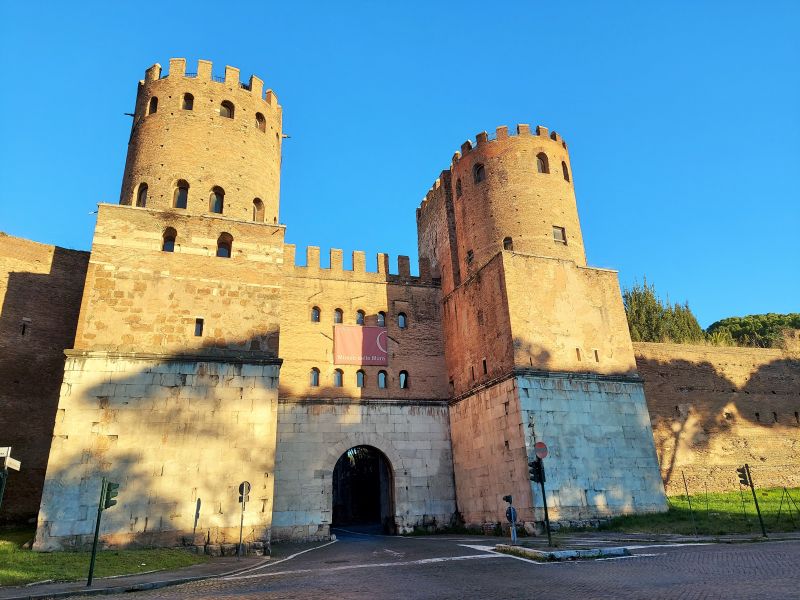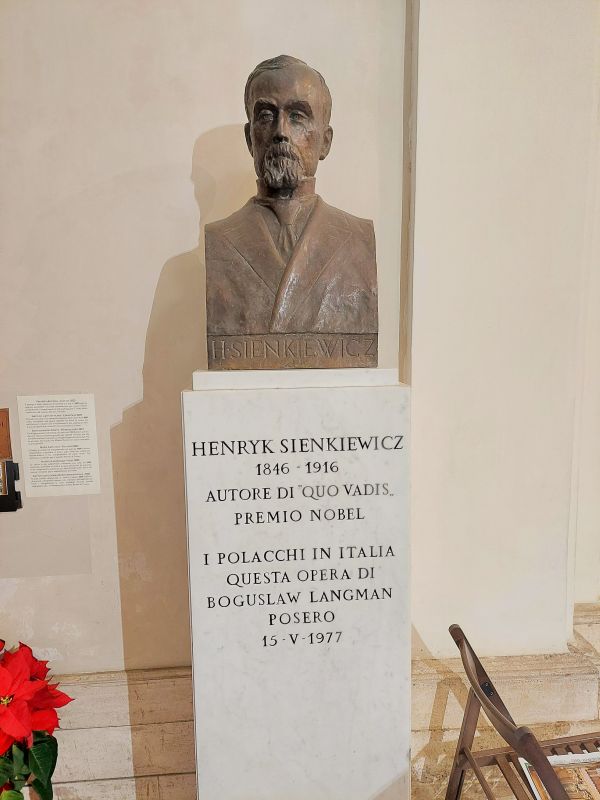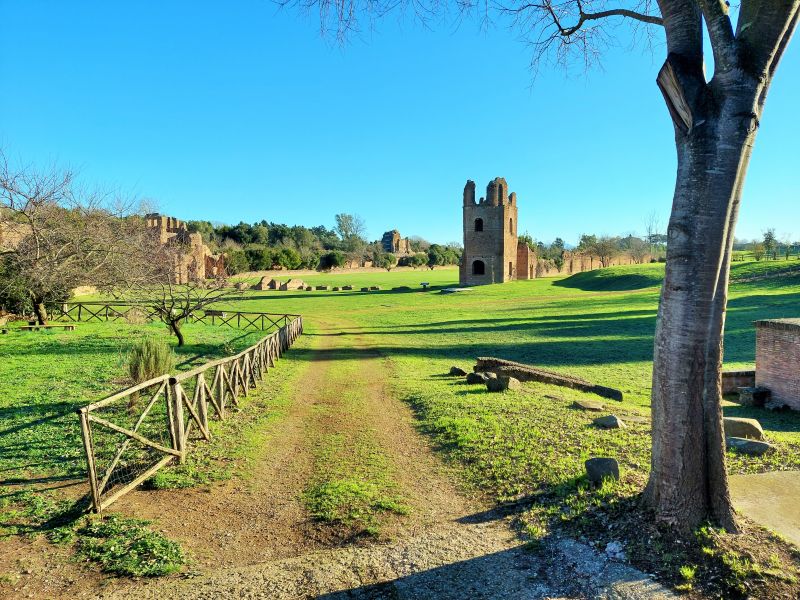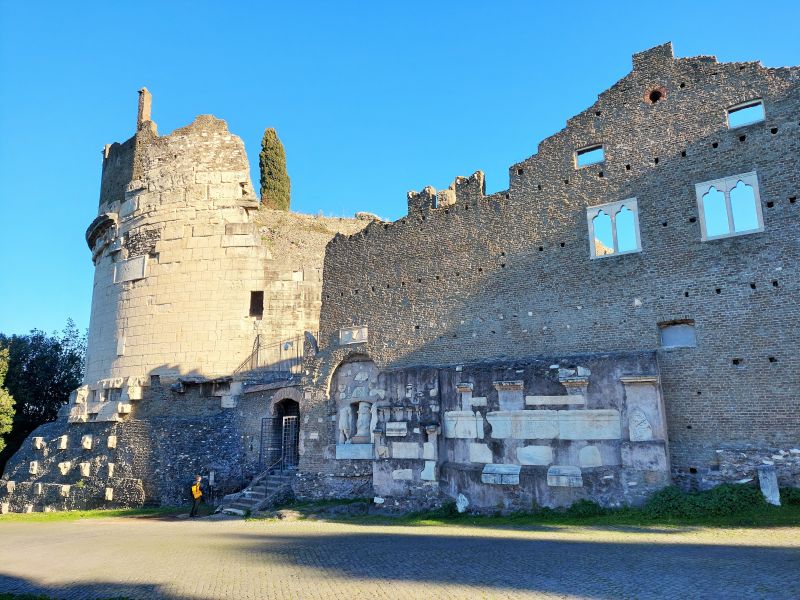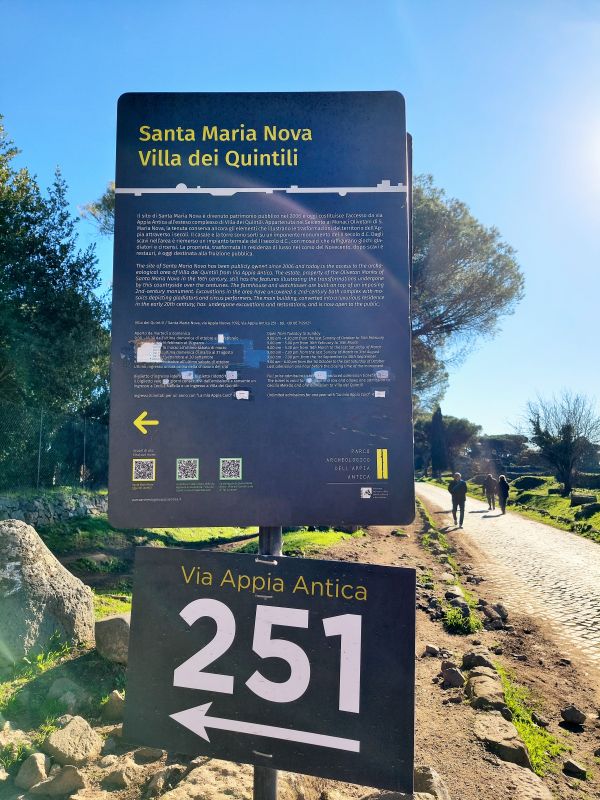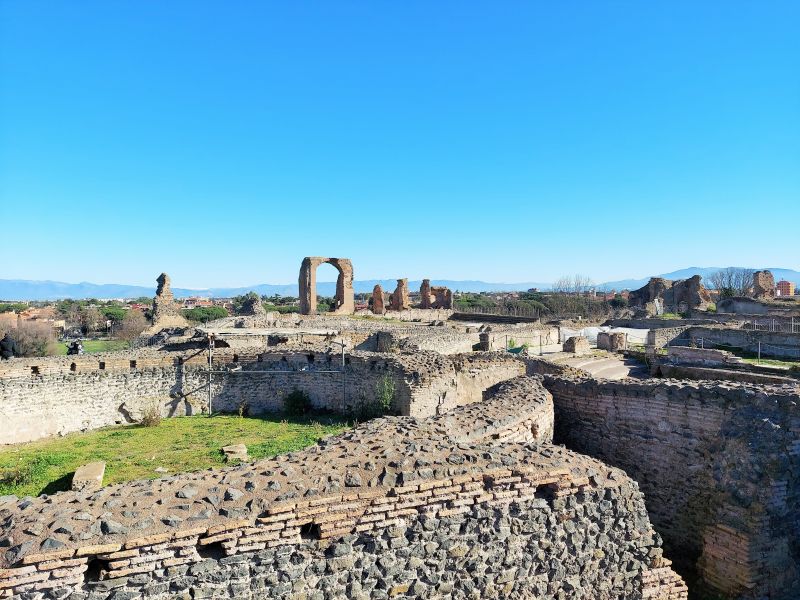Via Appia Antica – History
Via Appia Antica is one of the oldest and most significant roads in the history of ancient Rome. It was constructed in 312 BC by the censor Appius Claudius Caecus. Its purpose was to provide a quick strategic and military connection between Rome and the southern part of Italy, all the way to Brindisi. Brindisi, being an important port, enabled further trade and military connections with Greece and the Middle East. This made Via Appia a key route for Rome’s expansion and territorial control. Often called „Regina Viarum” (Queen of Roads), it was a masterpiece of Roman engineering, with a hard surface, water drainage, and rest areas, which allowed for the efficient transport of people and goods.
Via Appia Antica became a burial site for distinguished Romans. There were strict legal regulations prohibiting burials within the city walls of Rome. Prompting the search for suitable places outside the city. Via Appia, leading directly from the heart of Rome, was one of the more prestigious locations for such burials. Additionally, its location along the main communication artery ensured that the tombs and mausoleums were visible to passers-by, serving as a form of commemoration and honor for the deceased. In ancient Rome, it was believed that a grave’s location along such an important road as Via Appia ensured a lasting place in social memory for the deceased and easy access for their spirits to the world of the living and vice versa.
The richly decorated tombs and mausoleums along Via Appia were also an expression of the social status and wealth of the deceased’s family. The construction of monumental tombs was a way to demonstrate one’s social position, influence, and belonging to the Roman elite. Many of these tombs were designed to reflect the achievements and significance of the deceased, both for passers-by and for posterity.
Today, Via Appia is a wonderful place for a walk at any time of the year. It can also be explored by bike or on horseback. The place amazes with its tranquility and greenery, though it is located so close to the center of Rome. Especially on weekends, you will meet many city residents who want to escape the hustle and bustle.
Via Appia Antica – Route
For a leisurely walk, plan a whole day. It’s worth bringing water and something to eat, as opportunities to stock up on provisions along the way (especially on the further section of the route) are quite modest. There are several drinking water points. During my walk, there was also one operating food truck. In the summer, it’s worth wearing suitable headgear.
The walk can start at Circus Maximus. There is a metro station on line B, and you’ll likely disembark there if you’re staying in another part of Rome. We pass by the Baths of Caracalla (I won’t describe them in detail here as they deserve a separate article). If you haven’t had the chance to visit them, I highly recommend it. Entering Via di Porta San Sebastiano, we see the sign „Confine Parco Appia Antica,” marking the boundary of the Appian Way park. This street is very charming and narrow. Following it, it’s worth paying attention to the Tomb of the Scipios. This famous family played a key role in history. Scipio Africanus Minor led against Carthage in the Punic War. He led to its capture and destruction. The tomb is accessible for tours only with a guide, after prior reservation.
We reach Porta San Sebastiano, one of the largest and best-preserved gates in the Aurelian Walls, which surround the ancient heart of Rome. Porta San Sebastiano, also known as Porta Appia, was a key entry point into the city. Today, this gate houses a small, yet interesting Museum of the Walls, which offers insight into their history and construction. Open from Tuesday to Sunday, 9:00-14:00. Free entry.
Moving forward, special attention is needed. The initial section of Via Appia is not very comfortable for pedestrians. There is no sidewalk or safe roadside. Later, the road transforms into a pedestrian route, closed to car traffic. Thus, you may consider taking part of Via Appia by bus.
Church of Quo Vadis and Catacombs
The next important stop on the route is the small church of Domine Quo Vadis. According to tradition, when St. Peter was fleeing persecuted Rome, he met Christ here and asked, „Quo vadis, Domine?” („Where are you going, Lord?”), to which Jesus replied that he was going to Rome to be crucified again. This encounter prompted Peter to return and face his fate. The church preserves footprints, which, according to beliefs, belong to Jesus. Additionally, the church contains a bust of the Polish Nobel laureate, Henryk Sienkiewicz, author of the novel Quo Vadis.
Along Via Appia Antica, there are many catacombs, including the Catacombs of St. Callixtus, one of the largest and most important early Christian burial sites. They contain the tombs of many martyrs and sixteen popes from the first centuries of our era. The tour lasts about 40 minutes, closed on Wednesdays. The ticket costs 10 euros. A bit further are the Catacombs of St. Sebastian. The ticket also costs 10 euros, open daily. More information can be found here. Both places are visited in a group with a guide. If you would like to commute to the catacombs, there is bus 118 from the Circo Massimo stop. It stops at Catacombe S. Callisto and Basilica S. Sebastiano.
Villa of Maxentius
Continuing our walk, we reach the Villa of Maxentius. Villa di Massenzio is one of the most impressive and best-preserved archaeological complexes along Via Appia Antica. It was built at the beginning of the 4th century AD. Maxentius was a Roman emperor who died in the famous Battle of the Milvian Bridge, fought against the forces of Constantine the Great.
An important part of the complex is the monumental mausoleum. Its circular construction with a centrally located burial chamber is a typical example of Roman sepulchral architecture of this period. The Circus of Maxentius, though less preserved than other elements of the complex, is one of the best examples of a Roman circus in Italy. It was a facility used mainly for chariot races, which were a very popular form of entertainment in ancient Rome. The facility is closed on Mondays, free entry. Open from 10:00-16:00, it’s worth checking the current information on the website.
Tomb of Cecilia Metella
The mausoleum of Cecilia Metella was built in the 1st century BC. It stands out with its impressive, cylindrical structure. Originally, the tomb was covered with travertine plates, most of which have been stolen over the centuries. Attached to it are the ruins of the Castrum Caetani palace. In 1302-1303, the Caetani family bought land here (the Capo di Bove estate) and fortified it. A church (San Nicola Capo di Bove), stables were built. The object can be visited independently. The entrance ticket, priced at 8 euros. It is a combined ticket for several other objects (in addition to the mausoleum, also Capo di Bove, Villa dei Quintili, Tombe della via Latina, Antiquarium di Lucrezia Romana, Villa di Settebassi). During my visit, staff offered to watch an animation showing the mausoleum and the palace in their heyday, using VR glasses.
Just a little further, we find the archaeological area of Capo di Bove. Neither the ruins nor the exhibition are particularly interesting for someone who is not an expert on the subject. You can take a look for a few minutes. Keep in mind that you can enter here as part of the previously purchased ticket. Free toilets are available.
Villa dei Quintili
This extensive villa complex from the 2nd century AD belonged to the wealthy and influential Quintili brothers. Sextus Quintilius Condianus and Sextus Quintilius Valerius Maximus were prominent members of the Roman elite, known for their wealth and influence. Villa dei Quintili spans over 24 hectares and consists of several buildings, including the main residential palace, baths, theatre, and other auxiliary structures, such as stables and warehouses. What sets Villa dei Quintili apart is its impressive architecture and advanced engineering solutions, including heating and water systems. The interiors and surroundings of the villa were richly decorated with marbles, frescoes, and statues. After the death of the Quintili brothers in 182 AD on the orders of Emperor Commodus, the villa was confiscated and became part of the imperial estates.
The area to cover is quite large, so plan at least an hour and a half for a leisurely visit. There is only one entrance, so after visiting, you have to walk back a bit. We use the previously mentioned and purchased combined ticket for the Archaeological Park of Appia Antica. Open from Tuesday to Sunday, from 9:00. The closing hour varies depending on the season, you can check the current one here.
Return to the city center from Via Appia Antica and Ciampino Airport
If you decide to walk the entire distance on foot, you will reach Ciampino Airport. You can return to the city center by public transport in several ways:
- bus 520 + metro line A from the Cinecitta station (on one ticket valid for 100 min, cost 1.50 euros),
- bus 720 + metro line B from the Laurentina station (also costs 1.50 euros),
- direct Terravision bus to Termini station (ticket costs 6 euros),
- Atral bus + metro line A from the Anagnina station (1.20 +1.50 euros.
When planning a vacation in Rome, be sure to check out my other articles: Palazzo Colonna, Trajan’s Market, Vicus Caprarius, Case Romane del Celio, Forma Urbis Museum.
